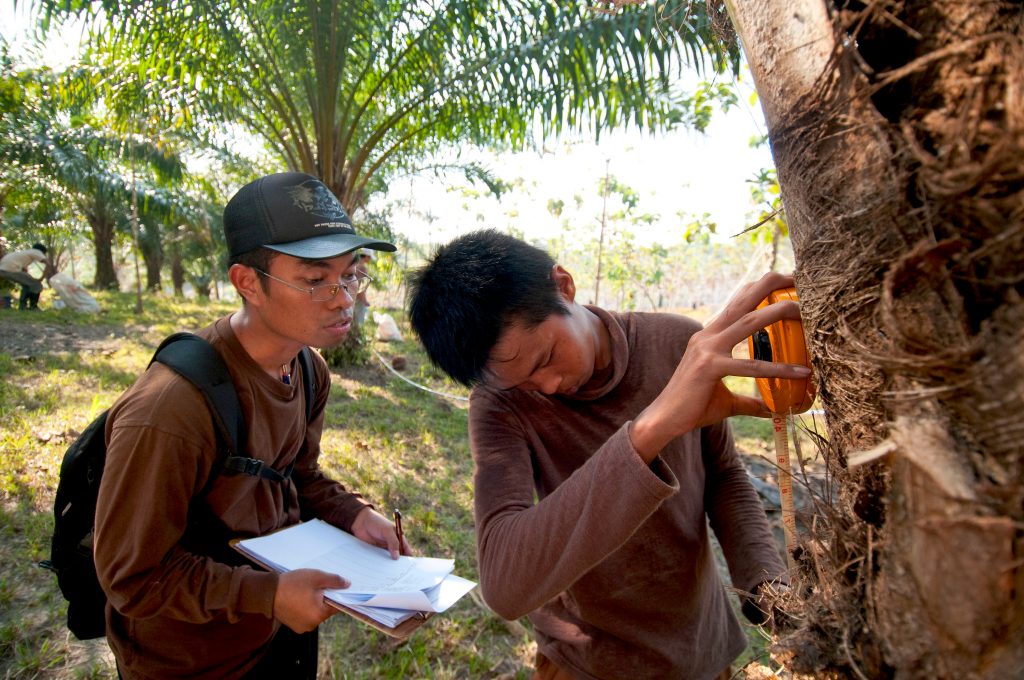More than 400 scientists in 72 countries — it’s an often-repeated statistic about The Nature Conservancy, found throughout our website, annual reports, or marketing campaigns. But the real story of the science and scientists that underpin our conservation work is more complex.
Cool Green Science sat down with Eddie Game, the Conservancy’s lead scientist for the Asia-Pacific region, to discuss how NGO scientists help set our conservation strategy.
Eddie Game
Lead Scientist, Asia Pacific
Eddie Game is the lead scientist for The Nature Conservancy, Asia Pacific Region. He is responsible for ensuring that the Conservancy remains a world leader in making science-based conservation decisions, can robustly report on our impact, and that we get the greatest return for our conservation investments.
Q: What does is actually mean to be a science-based organization?
A: To me, it means, quite simply, a commitment to evidence. A commitment that evidence helps inform the choices we make about what we do and where we do it. And a commitment to assess the evidence for the impact we’re having. It’s not a bar that we always live up to, but it’s why science is so integral to our approach and organizational DNA.
Q: A lot of people assume that conservationists are all ecologists. But that’s not true?
A: Only a small number of the Conservancy’s science staff are classically trained ecologists, because only a small part of the science on any projects is classical ecology. In fact, our Chief Scientist was trained as a mathematician. These days, projects depend not only on ecology, or remote sensing or GIS, but also on strong understanding of economics and human behavior, so we need economists involved.
They also depend on effective social relationships, and often there are multiple benefits, beyond nature, so we need social scientists to understand the pathways to those benefits and whether they’re being delivered or not.
Because we recognize the multifaceted nature of conservation projects, we deliberately employ science staff from across the full gamut of sciences. We need people who can speak all of those scientific languages. From a science point of view, being a globally integrated organization is one of our biggest strengths, because we’re able to effectively harness science expertise and direct it to where it’s needed across the globe.
Q: What are the big roles for scientists at the Conservancy?
A: The job of a scientist at The Nature Conservancy is usually divided into three tasks.
The first task is to make sure that the choices about where and how we work are supported by science. One of the unique strengths that our team of scientists bring is a strong understanding of local context. They have an intimate understanding of the conservation landscape, can recognize and interpret relevant science and use this to make recommendations to improve or verify our approach to conservation in that area. This type of work involves skills that you don’t necessarily get taught in university, like facilitating workshops, working with lots of stakeholders, and piecing together people with different jobs and motivations to achieve a collective outcome. The value proposition that the Conservancy provides is that we’re choosing projects carefully and doing the due diligence, and a big part of that is the science.
The second task for our scientists is looking at the impact of our work, so the evidence that something has worked in the past. That involves reporting to our funders, but also about making sure that we’re on track and actually making a difference where we need to. Our scientists also look back at the work we’ve done, comparing it to the current state and seeing what changes. That might involve field monitoring, but also increasingly social science, economics, and remote sensing.
The third task is acting as ambassadors and communicators for the authenticity of the Conservancy’s work. I think scientists still have a measure of credibility and independence. You’d expect a project manager to say that their project is a good one, but you expect a scientist to tell you straight up what the strengths and weaknesses are, or if we’re confident or if we need more information.
Q: Tell me about a few projects in your region that demonstrate Conservancy science at it’s best.
A: In the Solomon Islands, Rick Hamilton and his team used a cleverly optimized survey design to study the distribution and population of an important fish species, the bumphead parrot fish or Bulbometapon muricatum. They worked closely with local communities and with university researchers, and the work revealed a number of important things about the life history and exploitation of bumphead parrotfish that have helped guide our conservation and sustainable fisheries strategy.
And in the forests of Indonesian Borneo, we’re working together with researchers from Princeton University and the Queensland University of Technology to apply innovative acoustic survey methods to study the impact of logging practices on biodiversity. Not only is this work an important advance in the use of technology to survey biodiversity, but it’s also revealing things about the impact of logging on beta diversity, and this knowledge is feeding directly into decisions about the Conservancy’s strategy to conserve the forests of Borneo.
Q: So much of your work is built on partnerships? What value does the Conservancy bring to them?
A: We have partnerships with many universities because we recognize that the science that we draw on is constantly evolving. We don’t have the capacity to be at the forefront of every relevant research field, but what we do have are scientists that can be aware of those advances and with a sufficient reputation to be at the table in important meetings and workshops.
And our partners rely on us to make sure their work is directed to something that’s effectively applied. Good Conservancy scientists speed the transition from academic research to real impact.




Join the Discussion